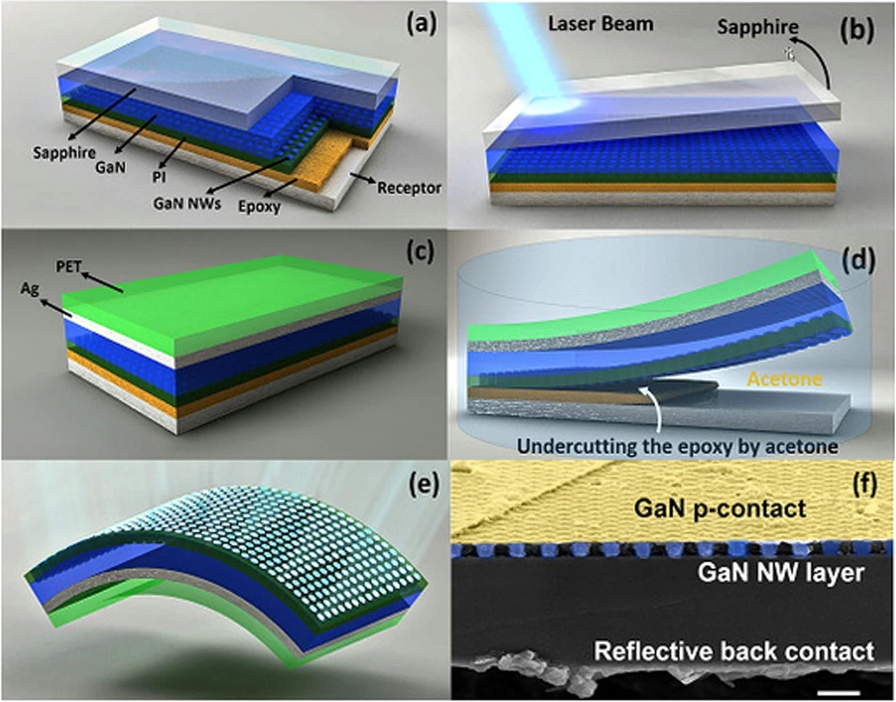After publishing the research paper demonstrating Micro LED integration with amorphous silicon TFTs, the research team from the University of Waterloo in Canada further revealed its approach of transferring InGaN nanowire LEDs on flexible substrate without degrading optical performance of the LEDs when the substrate bends.
Researchers use vertical GaN nanowire LEDs to separate the electrically active region of the LEDs from the bending platform. LEDs are transferred onto flexible polyethylene terephthalate (PET) with a “paste and cut” process. In this way, when the LEDs are integrated to flexible substrate, its emission performance degradation can be minimized.
The paper described how nanowire LEDs are bonded to a temporary receptor substrate with the sapphire substrate removed from the nanowire device with laser. Then, a metallic Ag adhesive bonded the GaN nanowire devices/receptor substrate structure onto a 175-μm-thick PET flexible substrate to transfer nanowire LEDs onto the PET.

(Image: Asad et. al 2019)
With the method, researchers hope to enhance the development of flexible structured LED display applications such as wearable devices.
The paper, titled “Optically invariant InGaN nanowire light-emitting diodes on flexible substrates under mechanical manipulation,” was published in Nature’s Flexible Electronics journal.
Related reading:
Micro LED and Amorphous Silicon TFTs Integration on Flexible Substrates for Low-cost Micro LED Display Manufacture












